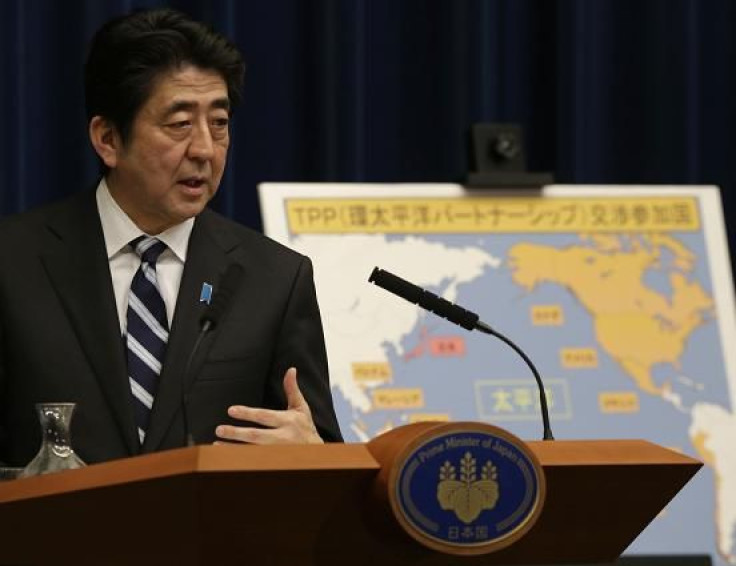3 Things Europe Can Learn From Japan's Abenomics

Like the storied salmon of Hokkaido, Japan’s economy, fueled by the three-pronged growth plan dubbed Abenomics, is making its way upstream.
Europe, on the other hand, is floundering.
Abenomics, named after new Prime Minister Shinzo Abe, breaks down into three parts: an expansionary monetary policy, increased fiscal spending and structural changes to increase competitiveness.
So, what can the debt-choked euro zone – which plunged back into recession earlier this month – learn from a revivified Japan?
1. Devalue The Euro, Already
One of Abe’s first moves, perhaps among the most controversial since the Liberal Democratic Party leader took office in December, was to aggressively take over the Bank of Japan, installing Governor Haruhiko Kuroda. Under his administration, the yen has been devalued by more than 30 percent since last September, and this has been great for Japanese exports.
And which euro zone country is a direct export competitor to Japan? Germany – the country that, haunted by nightmarish memories of hyperinflation in the 1920s, has vehemently opposed devaluing the euro. Because of this, countries on Europe’s economic outskirts – such as Greece, Cyprus and Portugal – have struggled to repay debts and remain competitive. But as Japan’s exports gain on Germany’s – and the latter’s export data have shown of a slowdown – may push it in the opposite direction.
“This dynamic could lead the European Central Bank to act more aggressively in devaluing the euro, which would help the periphery,” Scott Minerd, the global chief investment officer at Guggenheim Partners, wrote in a note. “Importantly, the measures could be carried out under the banner of stimulating economic growth through boosting exports in Germany and France, thereby avoiding the political backlash from the core, which is reluctant to provide help to the periphery.”
2. The Only Thing To Cut Is Austerity Itself
In July 2010, CNN host Fareed Zakaria pitted economists Paul Krugman and Niall Ferguson against each other to debate the merits of austerity. At the time, both options seems viable, and both had vocal proponents (aside from the two widely read and –watched personalities.) But as Europe fell deeper into what is now its longest recession since World War II, Japan posted a 3.5 percent growth rate after Abe’s bold stimulus package.
“Japan’s central bank is supporting recovery, and it’s working,” Adam S. Posen, president of the Peterson Institute for International Economics in Washington, told the New York Times. “The European Central Bank is supporting stagnation, and it’s working.”
Germany has vowed to maintain fiscal discipline while restructuring itself to become more competitive – but that is only one of Abe’s so-called three arrows.
3. The Customer Is Always Right – Even When Money’s Tight
A boost in exports is to be expected of an inflated currency, but here’s the most pleasant surprise of Abe’s policies – increased domestic consumer spending and household consumption.
In March, household spending surged to its highest levels in nine years, according to data from Reuters.
Yoshiki Shinke, a senior economist at the Dai-Ichi Life Research Institute, said that, if the corporate sector can catch up with household spending, the pace of growth in Japan could rapidly accelerate.
And, since many of Germany’s customers are on Europe’s debt-saddled periphery, Germany should be taking steps to increase consumer spending too. Francois Hollande, the president of France, which fell back into recession last week, has called for stimulus to increase growth, but his calls have gone unheeded.
© Copyright IBTimes 2024. All rights reserved.












